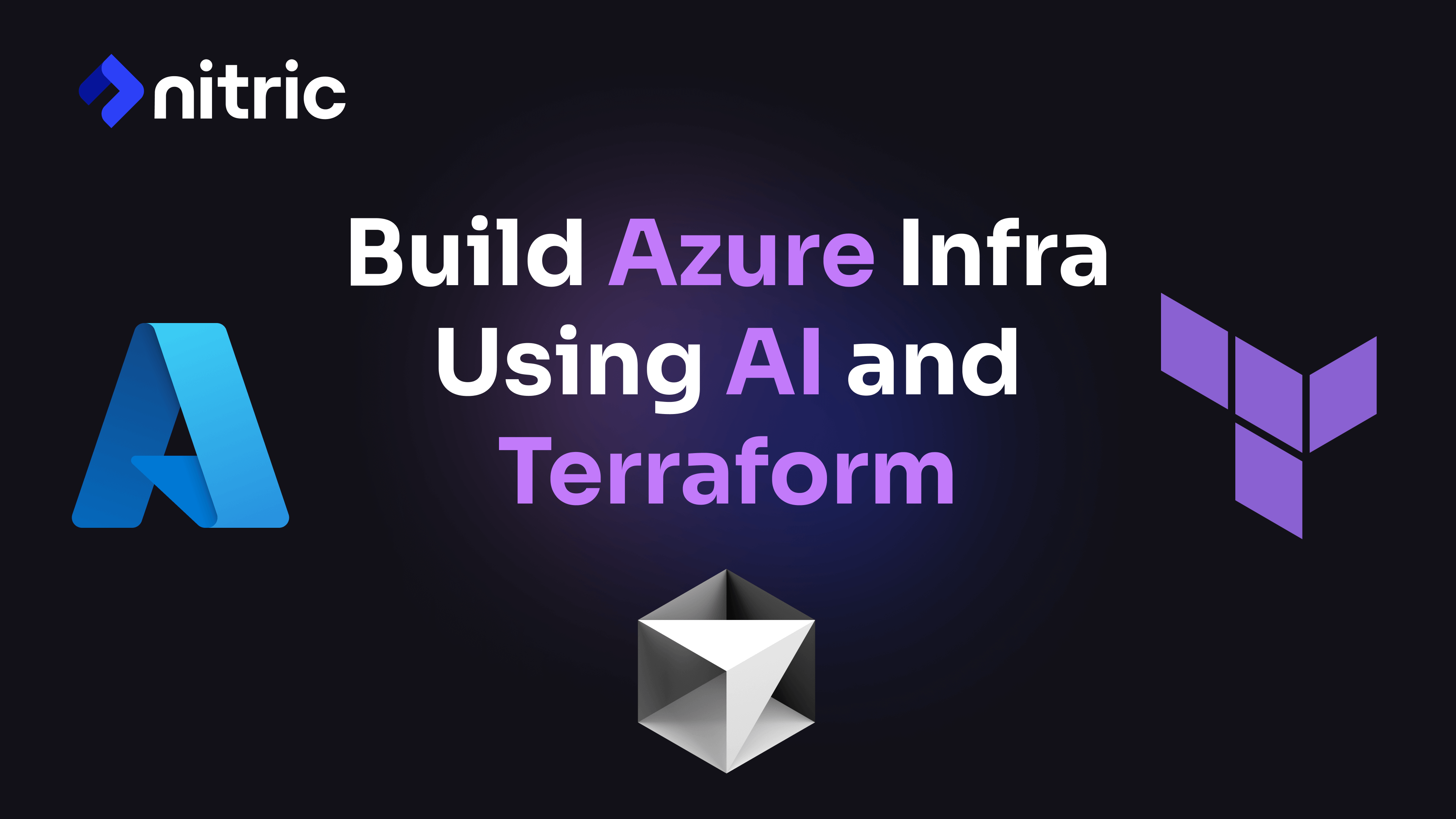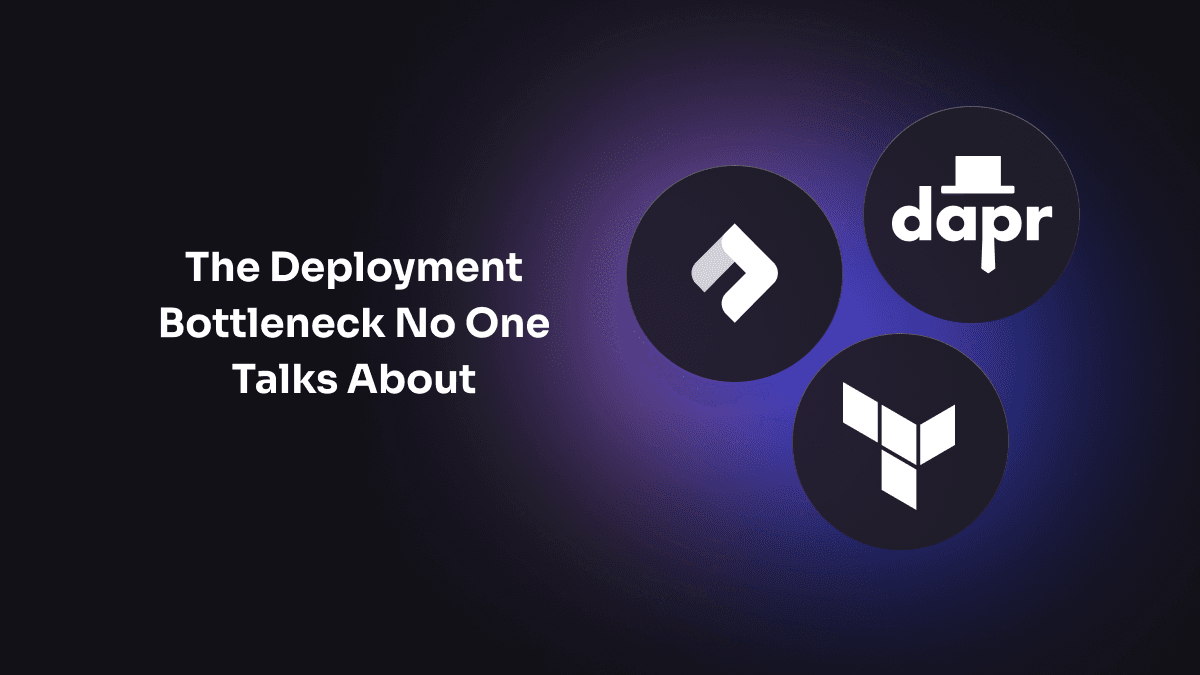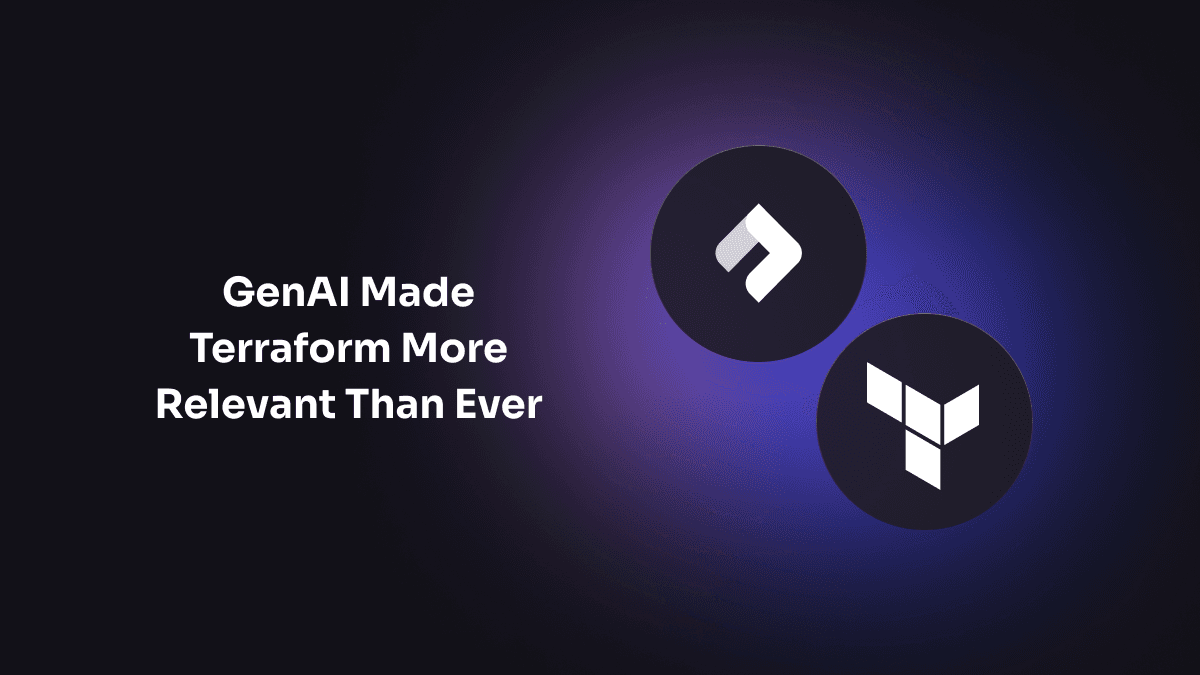Infrastructure as Code is more alive than ever, but it is no longer something teams write line by line. Terraform has become the backbone of modern infrastructure workflows, not because developers are manually authoring it, but because automation tools are writing it for them. Generative AI and orchestration platforms have changed the way we think about infrastructure. Developers focus on intent and design while automation handles provisioning. Terraform remains central to this shift by acting as the automation target, rather than the starting point.
Deploying cloud applications still comes with complex infrastructure challenges. In mid-2024, we explored how Terraform was surviving industry shifts, including HashiCorp's acquisition by IBM. One year later, Terraform has not only endured but become even more valuable. The rise of generative AI has changed how teams adopt Infrastructure as Code. AI assistants, such as Amazon's CodeWhisperer, can now generate Terraform configurations in real time. Developers can describe what they need in plain language and get infrastructure code without diving into syntax or module design. This change has removed barriers and accelerated cloud adoption.
Yet this acceleration has introduced new concerns. When AI generates infrastructure, how do teams ensure that configurations are correct, secure, and aligned with the application? Large language models can produce convincing but incorrect outputs. The rapid creation of Terraform configurations increases the risk of drift between infrastructure and application behavior. Terraform, as an automation target, needs systems that can validate, govern, and maintain alignment between what an application needs and what gets provisioned.
This is where orchestration tools like Nitric become essential. These tools sit between the application and the infrastructure. They interpret what the application needs and automate the generation of Terraform code, often producing configuration files that are more accurate, consistent, and compliant than hand-written ones. Rather than having developers write Terraform directly, Nitric enables them to describe resource needs using higher-level constructs in their preferred programming languages. These declarations are then translated into infrastructure specifications and Terraform modules.
Let’s revisit a code example that shows how this works. In the following snippet, a developer uses the Nitric framework in Python to define an API, key-value store, and a bucket. There are no Terraform files written by hand. The code simply declares the application’s needs:
from nitric.resources import api, kv, bucketfrom nitric.application import Nitricfrom nitric.context import HttpContext# Create an APImilky_way_api = api("milkyway")# Access key-value store with permissionsplanets = kv("planets_store").allow("get", "set")# Access image bucket with permissionsimages = bucket("planets_bucket").allow("read", "write")# Get planet information based on id@milky_way_api.get("/planets/:id")async def get_planet(ctx: HttpContext) -> None:pid = ctx.req.params["id"]d = await planets.get(pid)ctx.res.body = f"{d.content}"Nitric.run()
From this application code, Nitric generates a resource specification. This specification lists the required infrastructure, including an API gateway, a key-value store with specific access levels, and a storage bucket. The platform maps this specification to Terraform modules that are either prebuilt or organization-approved. Developers do not need to know the syntax for each Terraform module or manually wire up IAM permissions.
For example, if a project needs to provision secrets using Google Cloud's Secret Manager, Nitric can map that intent to a Terraform module like this:
resource "random_id" "secret_id" {byte_length = 4}resource "google_secret_manager_secret" "secret" {project = var.project_idsecret_id = "${var.stack_name}-${var.secret_name}-${random_id.secret_id.hex}"replication {auto {}}labels = {"x-nitric-${var.stack_id}-name" = var.secret_name"x-nitric-${var.stack_id}-type" = "secret"}}
The application might also declare different levels of access to the secret:
latest = secret("database.password").allow("access")latest = secret("database.password").allow("put")latest = secret("database.password").allow("put", "access")
Based on this, Nitric ensures that only the necessary IAM roles are granted by generating supporting Terraform resources:
resource "google_project_iam_custom_role" "secret_access_role" {project = var.project_idrole_id = "SecretAccessRole_${random_id.role_id.hex}"title = "Secret Access Role"permissions = ["resourcemanager.projects.get","secretmanager.secrets.get","secretmanager.versions.access"]}resource "google_project_iam_custom_role" "secret_put_role" {project = var.project_idrole_id = "SecretPutRole_${random_id.role_id.hex}"title = "Secret Put Role"permissions = ["secretmanager.versions.add","secretmanager.versions.enable"]}
Each resource declared in code is automatically provisioned and secured through a corresponding Terraform configuration. Developers remain focused on building features, while governance and security practices are enforced behind the scenes.
This shift is about more than convenience. It changes the role of DevOps from writing infrastructure scripts to defining policies, reviewing plans, and supervising automation. The productivity benefits are clear. Teams can move faster, reduce infrastructure drift, and maintain better compliance. More importantly, they are no longer limited by Terraform's learning curve or its syntax. Instead, Terraform becomes the reliable execution layer in a larger automation workflow.
In 2025, we are no longer debating whether to use Terraform. We are deciding how best to automate its generation and application. AI and orchestration platforms like Nitric bring speed and precision, ensuring that infrastructure provisioning stays aligned with application requirements. This is the path to scalable, secure, and maintainable cloud systems.
Checkout the latest posts

Why I joined Nitric
Why I left the corporate world to join Nitric

Build Azure Infrastructure Using AI and Terraform
Learn how to leverage AI and Terraform to build and deploy Azure infrastructure directly from your application code with Nitric.

The Deployment Bottleneck No One Talks About
The real bottleneck might not be in your pipeline but rather in how your application interacts with cloud services.
Get the most out of Nitric
Ship your first app faster with Next-gen infrastructure automation

